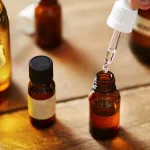Ever wonder why a painful period can feel like an invisible storm raging inside your body? You’re not alone. Many of us experience that relentless ache, the stubborn fatigue, and the nagging “something’s not right” feeling, only to be told it’s “just endometriosis.” What if I told you the immune system might be pulling the strings behind those symptoms?
In the next few minutes we’ll unpack how a mis‑firing immune response fuels endometriosis, explore the science that links it to autoimmune diseases, and walk through what this means for diagnosis and treatment. Think of this as a friendly coffee‑chat—no jargon, just honest, helpful info you can actually use.
What Is Endometriosis
Endometriosis is a condition where tissue that looks and acts like the lining of the uterus (the endometrium) shows up outside the uterus—most often on the ovaries, pelvic ligaments, the bladder, or even the bowel. Every month these rogue cells bleed, swell, and trigger inflammation, which translates to the classic endometriosis symptoms:
- Painful periods (dysmenorrhea)
- Chronic pelvic pain
- Pain during sex
- Infertility or difficulty conceiving
- Fatigue that feels unrelated to sleep
Globally, about 5‑10 % of women of reproductive age wrestle with this condition, yet the average diagnostic delay hovers around seven years. That delay often stems from the fact that doctors focus on hormonal explanations while overlooking a crucial player: the immune system.
Immune System Role
Our immune system is the body’s vigilant security guard. It patrols for viruses, bacterial invaders, and even weird‑looking cells that don’t belong. When it works correctly, it tolerates harmless tissue—like the endometrium—while keeping real threats at bay. In autoimmune endometriosis, that tolerance breaks down.
Instead of ignoring the stray endometrial cells, the immune system launches an attack, releasing cytokines (messenger molecules) and recruiting white blood cells. This creates a localized, chronic inflammation that not only fuels pain but also encourages the rogue tissue to grow and adhere. As according to Healthline, this immune dysregulation mirrors what we see in classic autoimmune diseases.
Autoimmune Link Science
Scientists have been digging into the overlap between endometriosis and autoimmunity for decades, and the evidence is stacking up.
Shared Biomarkers
Both conditions display elevated levels of inflammatory cytokines such as TNF‑α, IL‑6, and IL‑1β. They also share a hallmark of reduced apoptosis (the natural cell “self‑destruct” process). In other words, the cells that should die off stay alive, multiply, and cause trouble.
Auto‑antibodies
Several studies have detected auto‑antibodies in women with endometriosis—sometimes at rates as high as 30‑45 % for antinuclear antibodies (ANA) and lupus anticoagulant. One study reported that out of 59 patients, 28.8 % tested positive for ANA, while 45.5 % were lupus anticoagulant positive. Those numbers are strikingly similar to figures seen in systemic lupus erythematosus and rheumatoid arthritis.
Cellular Abnormalities
Research published in Fertility and Sterility highlighted that women with endometriosis show T‑cell and B‑cell irregularities akin to those in Crohn’s disease and psoriasis. The similarity suggests a shared pathway of immune dysfunction rather than an accidental coincidence.
Comparison Table
| Feature | Endometriosis | Rheumatoid Arthritis | Inflammatory Bowel Disease |
|---|---|---|---|
| Elevated cytokines | TNF‑α, IL‑6, IL‑1β | TNF‑α, IL‑1β | TNF‑α, IL‑6 |
| Auto‑antibodies | ANA, anti‑endometrial | RF, anti‑CCP | p‑ANCA, ASCA |
| Reduced apoptosis | Yes | Yes | Yes |
Seeing the same pattern across conditions helps us understand why many women with endometriosis also carry a diagnosis of thyroiditis, multiple sclerosis, or ulcerative colitis.
Risk Between Conditions
So, does having endometriosis raise your odds of picking up another autoimmune disease—and vice‑versa? The answer is a cautious “yes.”
Epidemiology Snapshot
Large‑scale reviews have shown that women with endometriosis are 1.5‑2 times more likely to develop autoimmune thyroid disease, type‑1 diabetes, or inflammatory bowel disease. Conversely, a history of autoimmune disease can increase the risk of developing endometriosis by a similar margin.
Bidirectional Risk Diagram (textual)
Imagine two circles overlapping—the “endometriosis” circle and the “autoimmune” circle. The intersecting area isn’t huge, but it’s far from negligible. In practical terms, this means that if you’ve already been diagnosed with one, it’s worth having a conversation with your doctor about screening for the other.
Diagnosis Implications
If the immune system is part of the puzzle, our diagnostic approach should reflect that. Many women are surprised when labs reveal unexpected auto‑antibodies during a routine work‑up.
Red‑Flag Symptoms to Watch
- Persistent fatigue that isn’t explained by sleep quality.
- Joint pain or morning stiffness.
- Unexplained skin rashes, especially on the face or hands.
- Recurring infections or poor wound healing.
These aren’t definitive proof of an autoimmune link, but they’re clues that your immune system might be playing a bigger role than previously thought.
Lab Work‑ups Worth Considering
- ANA panel (to detect antinuclear antibodies).
- Anti‑endometrial antibody assays (still mainly research tools).
- Comprehensive cytokine profile (if available through a specialty lab).
- Peritoneal fluid analysis during laparoscopy—can show elevated macrophage activity.
Clinician Checklist
When you meet with a gynecologist or rheumatologist, you might ask them to consider the following:
- “Can we test for ANA or other auto‑antibodies as part of my work‑up?”
- “What does my cytokine profile tell us about inflammation?”
- “Should I be screened for thyroid or intestinal autoimmune disorders?”
Treatment Options
Historically, endometriosis treatment centered on hormones (like oral contraceptives or GnRH agonists) and surgical removal of lesions. While those approaches can bring relief, they don’t address the underlying immune dysfunction. Let’s explore the evolving landscape.
Standard Hormonal & Surgical Approaches
These remain first‑line for many patients: birth‑control pills, progestins, and laparoscopic excision or ablation. They work by starving the ectopic tissue of estrogen, which can shrink lesions and ease pain. However, relapse rates are high—up to 40 % within two years.
Immunomodulatory Therapies (Emerging)
Researchers have begun borrowing drugs from rheumatology to calm the misguided immune response:
- TNF‑α inhibitors (e.g., infliximab) – shown in small trials to reduce pelvic pain.
- Hydroxychloroquine – an antimalarial that dampens auto‑antibody production; early data suggest a 30 % pain reduction.
- Low‑dose naltrexone – modulates the opioid system and may indirectly reduce inflammation.
These options are still “off‑label” for most patients, meaning they’re prescribed based on a doctor’s judgment and emerging evidence rather than formal FDA approval for endometriosis.
Pros/Cons Table
| Approach | Pros | Cons |
|---|---|---|
| Hormonal suppression | Effective for many; widely available; insurance coverage | Side effects (weight gain, mood swings); not curative; high relapse |
| Surgical excision | Immediate removal of lesions; diagnostic confirmation | Invasive; possible scar tissue; pain may return |
| Immunomodulators | Targets underlying immune dysfunction; promising pain reduction | Limited long‑term data; may require specialist monitoring; off‑label |
Lifestyle & Natural Immune Support
Even if you’re not ready for prescription immunomodulators, everyday choices can tip the immune balance toward calm:
- Anti‑inflammatory diet: focus on omega‑3 rich fish, leafy greens, and limit processed sugars.
- Gut health: probiotics, fermented foods, and possibly a low‑FODMAP trial if you have IBS‑like symptoms.
- Stress management: yoga, meditation, or even a daily 10‑minute breathing exercise. Chronic stress fuels cortisol spikes, which can aggravate both inflammation and auto‑antibody production.
- Environmental toxin reduction: avoid BPA‑containing plastics and consider a low‑dioxin diet (organic produce, filtered water).
These steps won’t replace medical treatment, but they create a supportive backdrop that can enhance the efficacy of any therapy.
Real‑World Stories
Numbers are persuasive, but personal stories often do the heavy lifting of empathy. Here are two brief anecdotes that illustrate the endometriosis‑autoimmune connection in action.
Story 1: From Thyroiditis to Pelvic Pain
Emily, 32, had been managing Hashimoto’s thyroiditis for years when she started experiencing severe dysmenorrhea and deep‑pelvic aching that didn’t ease with ibuprofen. After a laparoscopy confirmed endometriosis, her endocrinologist suggested checking for ANA and cytokine levels. The labs came back positive, prompting a trial of low‑dose hydroxychloroquine. Within three months, Emily reported a 45 % drop in pain and, surprisingly, a slight improvement in her thyroid hormone stability. She says the “mind‑body‑immune” insight changed how she talks to her doctors.
Story 2: Immunomodulator Trial After Failed Surgeries
Jenna, 28, had two laparoscopic excisions but still woke up each month with “cramping that feels like a punch to the gut.” A rheumatologist, after reviewing her history of unexplained joint stiffness, ordered a TNF‑α inhibitor trial. Six weeks later, Jenna’s pain scores halved, and her inflammatory markers (CRP) fell dramatically. While she continues to monitor side effects, Jenna feels “hopeful for the first time in years.”
These narratives underscore a critical point: listening to the whole body—hormones, immune cues, and personal experience—can open doors to more effective, individualized care.
Putting It All Together
So, what have we learned?
- Endometriosis isn’t just a hormonal issue; the immune system often goes rogue, creating a chronic inflammatory environment.
- Shared biomarkers, auto‑antibodies, and cellular abnormalities link endometriosis to classic autoimmune diseases.
- If you have one condition, the odds of developing the other rise modestly—so stay proactive about screening.
- Traditional hormone‑centric treatments help many, but they may miss the root cause. Emerging immunomodulatory therapies and lifestyle tweaks offer promising complementary paths.
- Real‑world experiences show that a holistic, immune‑aware approach can dramatically improve quality of life.
What matters most is that you feel empowered to ask the right questions, explore comprehensive testing, and partner with providers who see you as a whole person—not just a set of symptoms.
If any part of this resonates—or if you’re curious about how to start an immune‑focused conversation with your doctor—drop a comment below. Share your story, ask questions, or simply say “hello.” We’re all in this together, and together we can turn the tide on endometriosis.


















Leave a Reply
You must be logged in to post a comment.